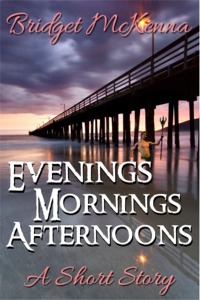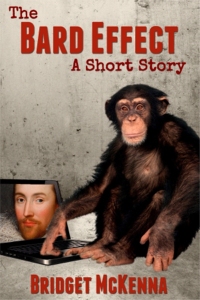In 1985, I had sold a couple of short fiction pieces to mainstream markets, but had yet to make a sale in science fiction and fantasy. It wasn’t for lack of trying, but even though most of the short fiction markets were SF/F publications even that long ago, there were still too few for the number of people wanting to break into them. I got back some great rejections, but couldn’t get a look in to the magazines of the day. I was by turns determined to break in to the science fiction field and certain I didn’t have what it took to write science fiction. Mind you, I didn’t know what that mysterious quality might be, but I spent about half my time thinking that much like green eyes or curly hair, I hadn’t been blessed with it.
In the spring of that year I went to a science fiction convention and heard Algis Budrys speaking about the quarterly Writers of the Future Contest, which was going into its second year at the time. I went to the WotF party that night, sat around with Algis and Dean Wesley Smith (who had just had a story appear in Writers of the Future, Volume I) and a lot of other pros and hopefuls. Algis told us about the structure he believed lurked at the center of every story, and how to use it to write fiction (I talk about this in a little more detail in the afterword to “Hole in the Wall,” which is reprinted on my blog here). It was a good contest, and as far as I know it still is. The prizes are generous, and it’s given writers far more prominent than I their kick-start in writing SF/F. I decided then and there that I'd submit a story every quarter until they either gave me a prize or told me to bugger off.
“The Old Organ Trail” was my third quarterly submission to the contest. One evening in December of 1985, I got a phone call from the contest director informing me I’d won first prize in the fourth quarter of that year’s contest and that I’d also be getting an offer for the story from Algis, who was editing the anthology. So in addition to the $1,000 prize money for the quarter, I made another princely sum in 1980s dollars from the sale of the story. I was so gobsmacked I completely forgot how I almost gave it all away...
(CUE SCOOBY-DOO FLASHBACK FX)
Some months previous to writing the story, I’d been driving down California Highway 41, as I often did on my way from home to work, and I encountered a sign for Interstate Highway 299, the historical Old Oregon Trail. On this particular morning my sleep-deprived eyes mis-read the sign. “Oh, that’s funny!” I thought when I realized I’d accidentally seen the words “The Old Organ Trail.” “That’d make a good story title,” was the next thing I thought, but I dismissed it almost instantly. After all, the title was clearly humor, and I was a serious writer. Of serious stories. I was still a little new to the whole fiction writing business, and took it all rather seriously.
I had a friend, however, who was a natural humorist and a good writer. I approached him with my humorous title. “I’ll never write the story that goes with this,” I told him, “so feel free to use it if you can.” Some weeks or months went by. I was out having cheap Mexican food with my humorist friend, and I asked him if he’d ever done anything with that story title. “No,” he said. “I keep thinking it’s actually your story after all.”
I started to go into my “I don’t do humor” routine, but he just said “Why don’t you tell me what the story’s about?” “It’s about my Uncle Pewtie,” I began. I had not then, and have not now, any idea where those words came from. “He used to be a liverlegger, but he’s retired now…well, whaddya know? Maybe it is my story.”
And it was. And my friend was and is a wise man. And once I started writing, the words just wouldn’t stop. And when it won a contest and was published in a paperback anthology, I knew I’d turned a corner I could never un-turn. I was a science fiction writer.
A few months after winning the contest quarter, Algis invited me to participate in the first Writers of the Future workshop. They hold these for the contest winners every year now, but this was a test run to see if the idea was a good one. Each invitee had to pay for his or her own travel, food, and lodging; the instruction was free.
And what instruction it was! Algis’s connections with the movers and shakers of the golden age went back to his teenage years, and it would have been hard to think of any well-known SF writer who didn’t consider him either a friend or a mentor—usually both. He had assembled a who’s who of science fiction to spend a week teaching us in Taos, New Mexico: Frederik Pohl, Jack Williamson, Gene Wolfe, and Algis himself. When that week was done, I had a better grasp on what I was doing as a writer than I’d ever known or imagined. I had knowledge of the publishing business I would have spent years acquiring the hard way. And I had some new friends who are now treasured old friends. I went home and used my new knowledge to start writing better stories.
It took me a few years to make my next SF/F sale, but I was writing the whole time, and also writing for a living in the computer games industry. When I got to feeling down about it, I could always look at that copy of the anthology in my bookshelf and know I was doing something right, and if I did it then, I could do it again. Eventually the sales came, and the checks, and some award nominations, and a full-time writing day job, and eventually I wrote and sold some novels. I learned that mastery isn’t a target, but a never-ending process, and that writing success isn’t so much a destination as a journey that all writers are on all the time. If you’re on that journey, I’ll see you on the road. Keep an eye peeled for liverleggers.













 RSS Feed
RSS Feed




